Pinnacles are the remnants of an ancient volcanic area that erupted around 23 million years ago. The volcanic field was originally located almost 200 miles southeast of the park, but when the Pacific plate migrated northward, it broke apart and carried roughly two-thirds of it to where Pinnacles is now. Wind, rain, and glacier erosion revealed the rock formations over millions of years, resulting in the park’s distinctive terrain of monoliths and canyons.
Perhaps you, like us, have driven by the Pinnacles National Park sign near Hollister but never stopped to look. During a month-long RV trip across central and southern California, we eventually added this hidden treasure to our itinerary.
Before our visit, I didn’t have many preconceived notions about Pinnacles. But I have to confess, what we discovered pleasantly surprised me. The vistas are breathtaking. Hiking paths that are both challenging and enjoyable. And there were no crowds on a weekend, which is unusual in California!
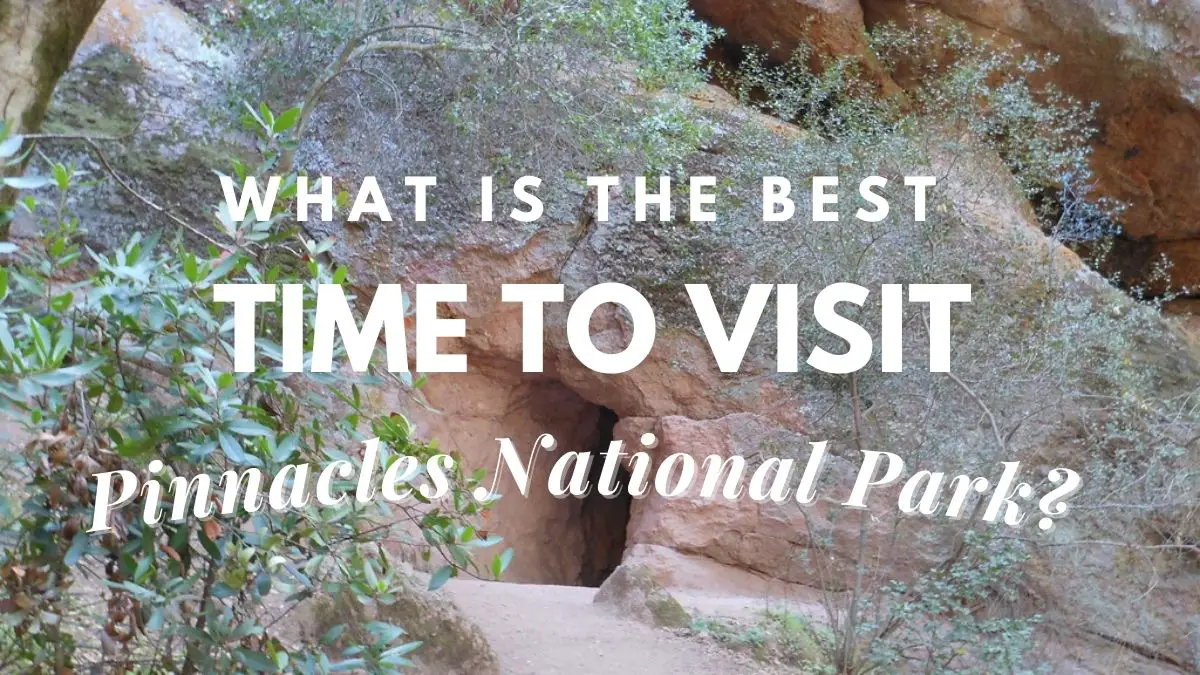
What is the best time to visit Pinnacles National Park?
Pinnacles National Park may be visited at any time of year because to its mild Mediterranean environment.
However, the months of mid-February to early-June are the most popular for visitors. This is due to two factors.
The first is that, due to its lack of snow and mild climate, Pinnacles is one of the finest California national parks to visit in the winter.
The other is the park’s 100 types of beautiful wildflowers, which bloom in the spring and take over the area.
I haven’t seen these yet, but I’ve heard the wildflowers at Pinnacles National Park are spectacular.
After a week of severe rain, I came on a Saturday in late January, and the park was busier than I imagined, but not overcrowded.
If you want to come when there are less people, go in the fall. You’ll have more of the park to yourself.
If you’re not used to intense heat, I wouldn’t advocate visiting in the summer.
On warm days, the park, which is inland from the Pacific Ocean, may reach temperatures of above 100 degrees Fahrenheit.
If you go in the summer, remember to take it slow and carry lots of water due to the lack of shade on the paths.
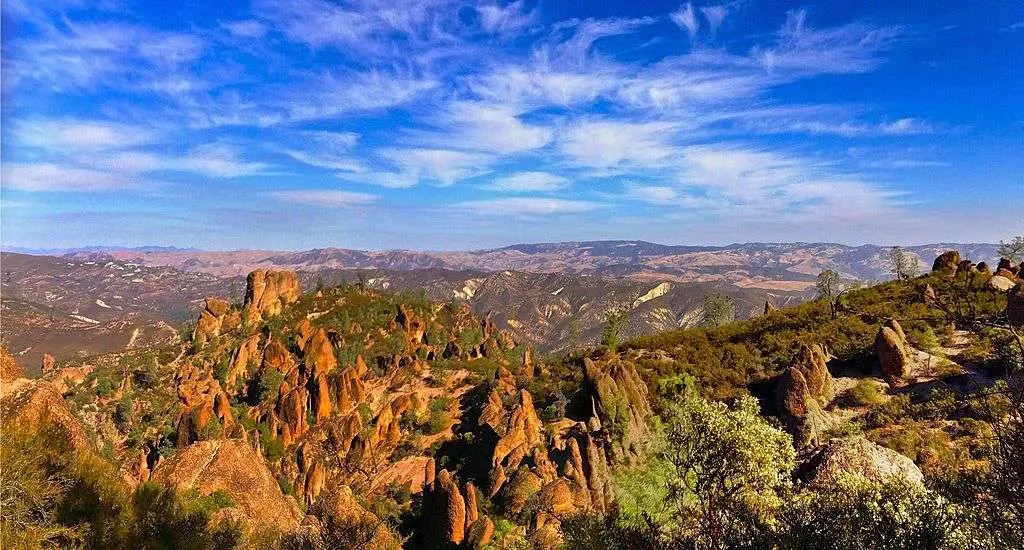
Read: Is Traveling A Hobby? The Ultimate Guide To An Exciting Way Of Life
Learn about the Downsides Of Traveling As A Hobby
How to get to the Pinnacles National Park
First and foremost. There are two entrances to Pinnacles, and they are not connected by roadways.
We chose the western gate because it was just about an hour away from our Monterey campground where we were staying for the week.
The park’s western side is more distant than its eastern half.
But, to my delight, there’s a fantastic new “visitor contact station” with an informative video and running water at the western gate.
However, keep in mind that the road leading to the west gate is rather winding. RVs are not advised to use it.
There is a campsite at the eastern entrance for RV travelers who want to remain in the park.
It’s one of the few National Park Service campgrounds with electricity, showers, and a trash station.
There’s also a pool, which a ranger explained was left over from when the campground was privately run.
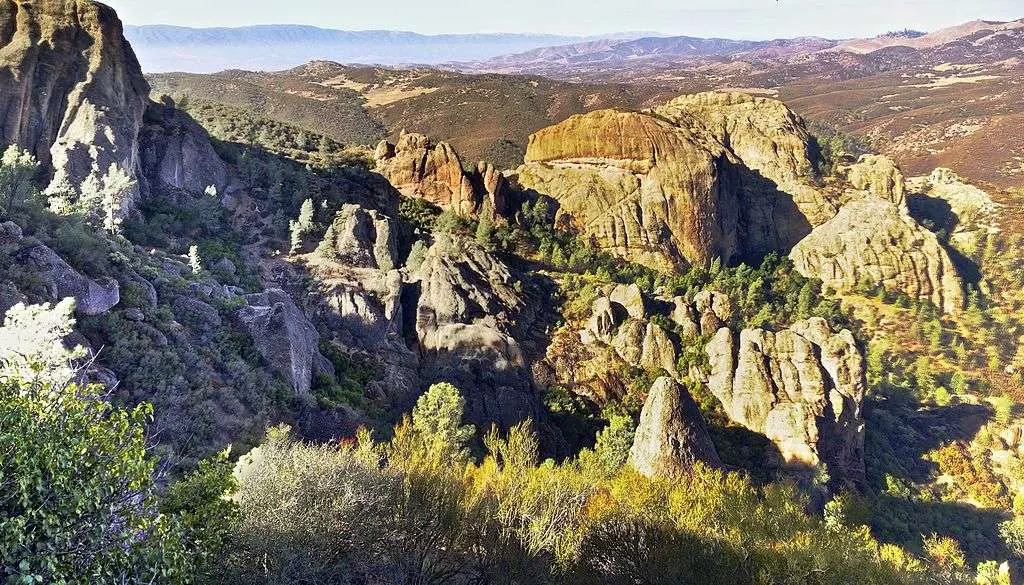
Learn about Hours of Operation at Pinnacles National Park
What is the Pinnacles National Park known for?
At the time of visiting the Pinnacles National Park, you need to understand what it is known for.
This will help you to receive the maximum returns out of time that you are spending at the National Park.
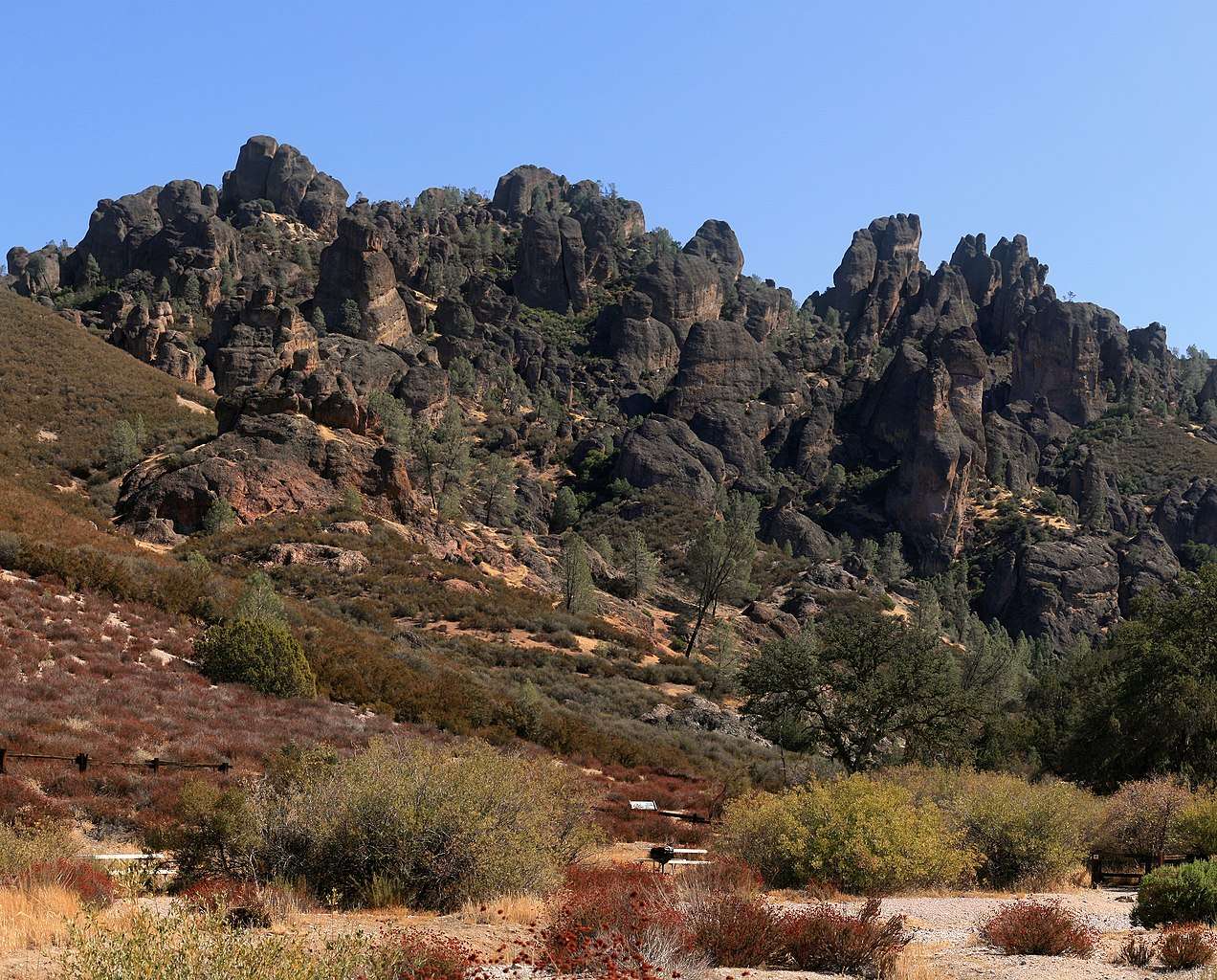
Learn about the Best moderate hikes at the park
Red Rocks
One of the things that impressed me about Pinnacles is how simple it is to traverse.
One of the reasons for this is that it is the smallest National Park in California, with only 26,600 acres (and the seventh smallest overall).
Pinnacles was one of the first sites in the United States to be declared as a National Monument. In 1908, President Teddy Roosevelt bestowed this honor to it.
However, the “upgrade” to National Park status had to wait until 2013.
Nothing much changed when it was designated as a National Park, according to the rangers we spoke with, save for an increase in the number of tourists.
In 2018, just approximately 200,000 visitors visited Pinnacles. This Park appears to be concealed from view.
It takes two hours to go to the Bay Area and three hours to get to Sacramento.
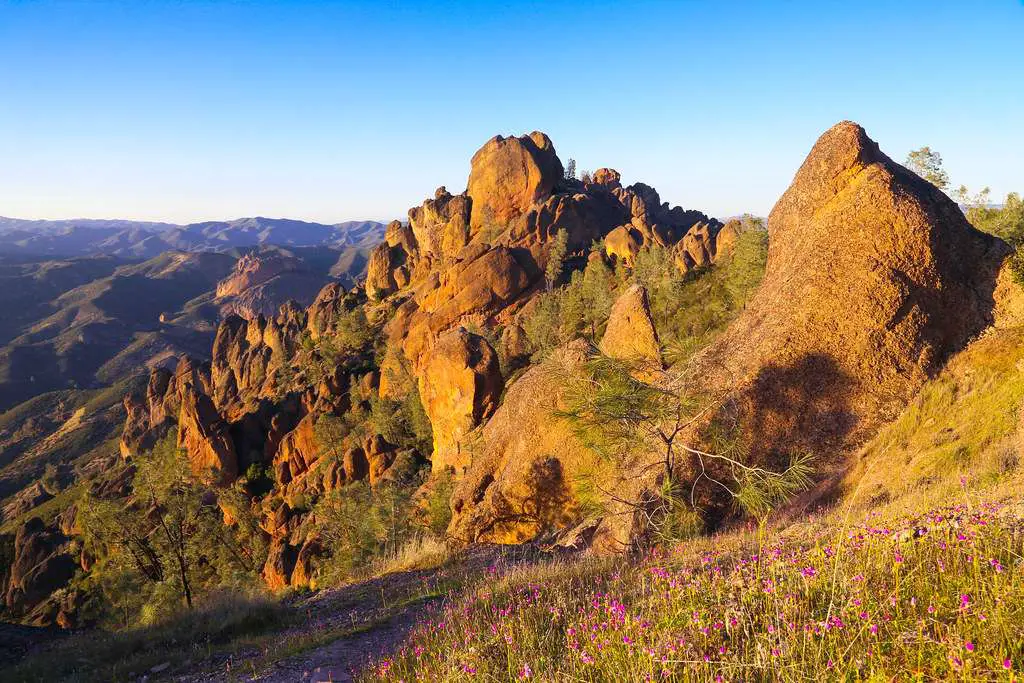
Great sceneries
Ben and I discussed the advantages of Pinnacles being designated as a “National Park” rather than a “National Monument” while we hiked.
We came to the conclusion that more people should be aware of the 128 National Monument locations.
Some of them preserve natural regions that are as bit as beautiful as you’d imagine a National Park to be, while others save a historically significant location or structure.
I don’t think the distinction between “Monument” and “Park” indicates how special a location is.
However, I entirely understand why residents advocated for the improvement in the hopes of increasing visitor numbers and therefore bringing more money into the community.
The pinnacles themselves are the stars of the show here, thrusting volcanic rock into the sky millions of years ago owing to shifting tectonic plates and magma.
These vibrant rocks reminded me of Custer, South Dakota’s The Needles.
Wind, rain, and frost eroded the rocks throughout time, resulting in the spectacular formations visible today.
The rest of the volcano is now roughly 200 miles east of the Pinnacles, near Lancaster, California, having been torn apart by the San Andreas Fault.
In the spring, Pinnacles is noted for its gorgeous wildflowers.
This land’s history is equally fascinating. It is unknown how long indigenous peoples have resided in this area. The construction of a mission in neighboring Soledad had a significant impact on the area.
In the early days of California, this was clearly an area of high political friction. There are also rumors of a local outlaw lurking amid the Pinnacles’ turrets and caverns.
Schuyler Hain, a local homesteader, was a strong supporter for the area’s conservation in order to maintain its natural beauty and attract more visitors, which would assist the local economy.
Today, the Amah Mutsun Tribal Band and the Chalone Indian Nation collaborate with the National Park Service to preserve their traditional heritage.
The opportunity to witness California condors in the wild was perhaps the most appealing aspect for me.
This is the only National Park Service facility that maintains a condor release site for captive-bred condors.
These critically endangered birds are an example of conservation success.
After nearly going extinct in the wild in the 1970s, around 100 of these massive (their wingspans may exceed 9.5 feet!) birds can now be found soaring along the central coast. You may learn more about condors here – I’m a sucker for their names.
Of course, there are plenty of other animals to see here, including more than 160 different bird species, bats, kangaroo rats, and more.
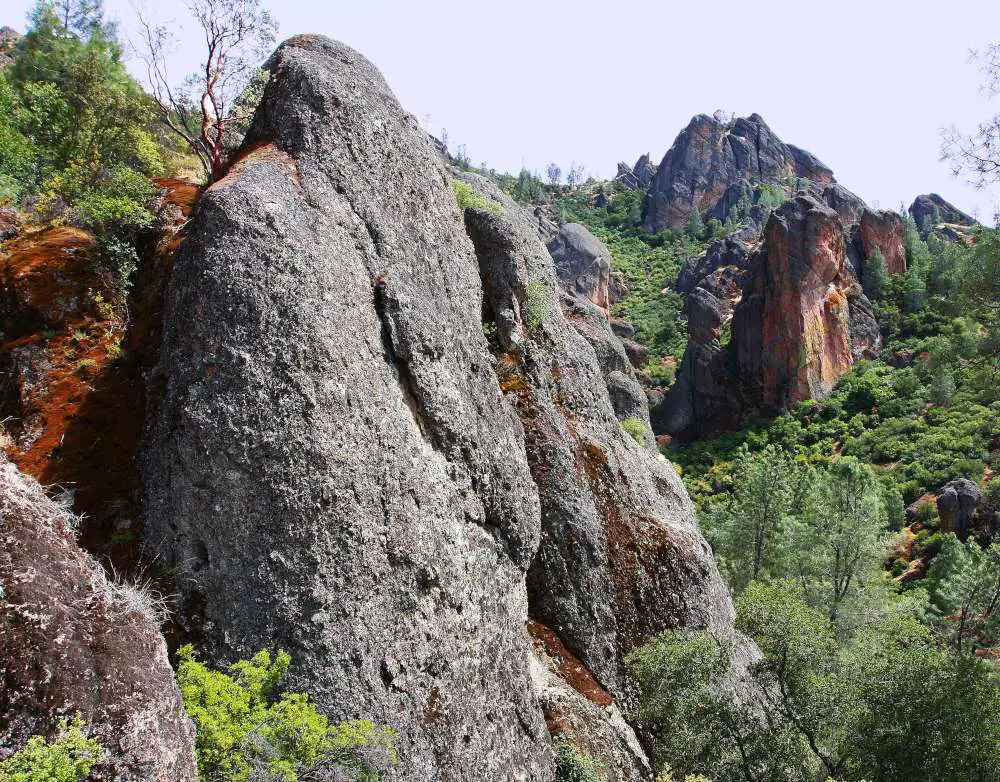
The Best Pinnacles Trails
Pinnacles National Park does not accept dogs on the trails.
Pinnacles’ modest size, in my opinion, adds to its distinctiveness. In contrast to some parks that are so large that planning a route may be daunting, this one is really simple to explore.
This isn’t a car-centric park, unlike several that are famed for their picturesque drives. It’s a location where you’re encouraged to explore the 30 miles of trails.
These trails will take you through mossy forests, parched barren deserts, and a surprise reservoir oasis.
We were on the trails in no time after a brief drive from the east gate to the Chaparral parking area.
While there is no way to drive between the western and eastern gates, hiking throughout the park in a single day is possible.
Because all of the paths are interconnected, it’s simple to tailor your journey to your interests, whether you want to explore the cliffs, caves, or both.
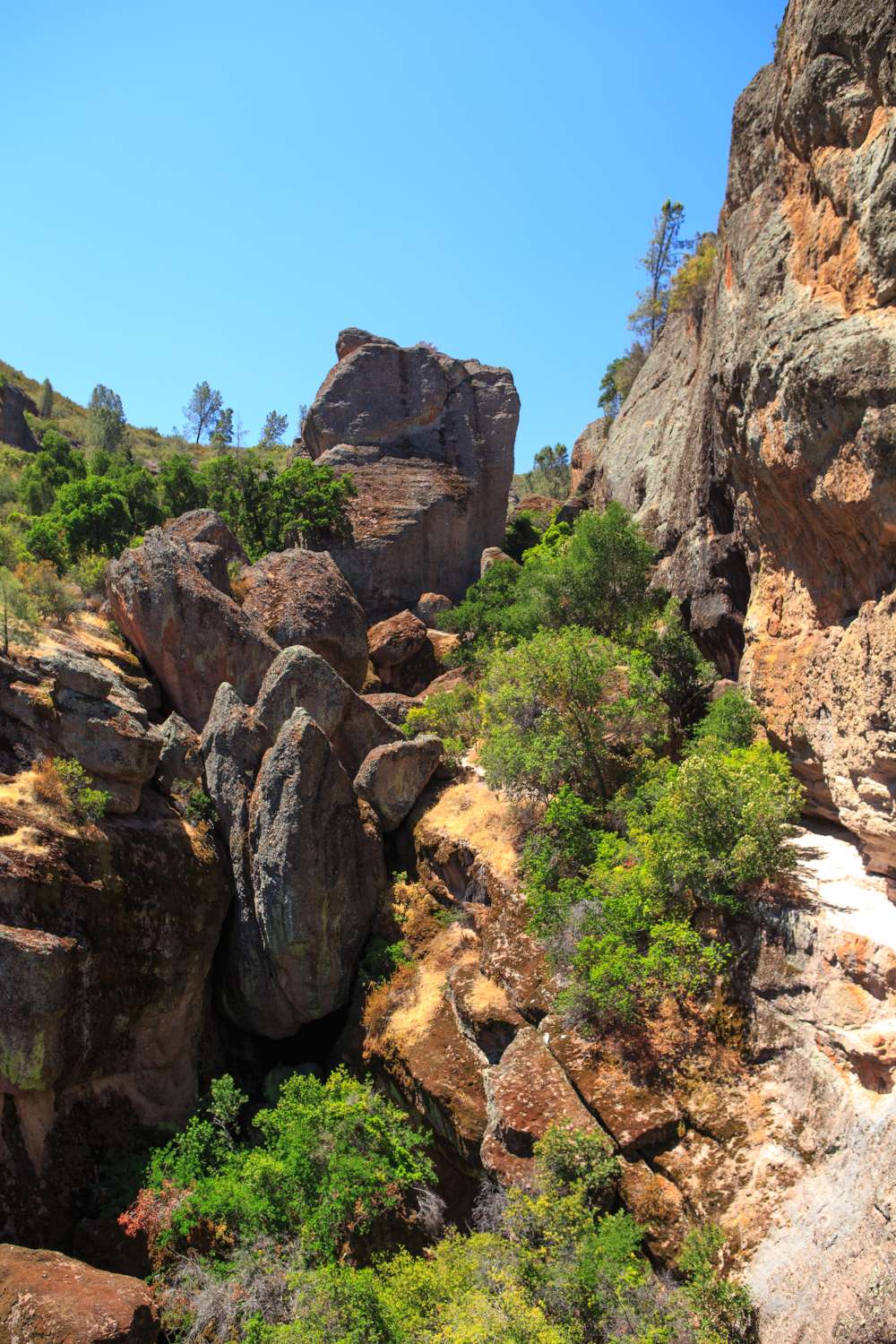
Pinnacles Tunnel Trail
The weather was in the 50s when we went in January. We opted to start our walk to High Peaks in the middle of the morning to allow some of the coastal clouds to burn off, in the hopes of spotting some condors.
That plan worked out well for us.
Be aware that the summers in this region of California are quite hot.
Make careful to plan ahead of time and bring plenty of water.
Pinnacles is also a popular rock climbing location. It’s also an excellent spot for exploring talus caves in the outdoors.
(Open areas between falling stones produce Talus caverns.) The caverns are closed during the bat mating season from mid-May to mid-July.
Remember that dogs are not permitted on the Pinnacles paths. (While we hiked, Hobbes stayed in the car, but he did enjoy looking at the sign at the visitor’s center.)
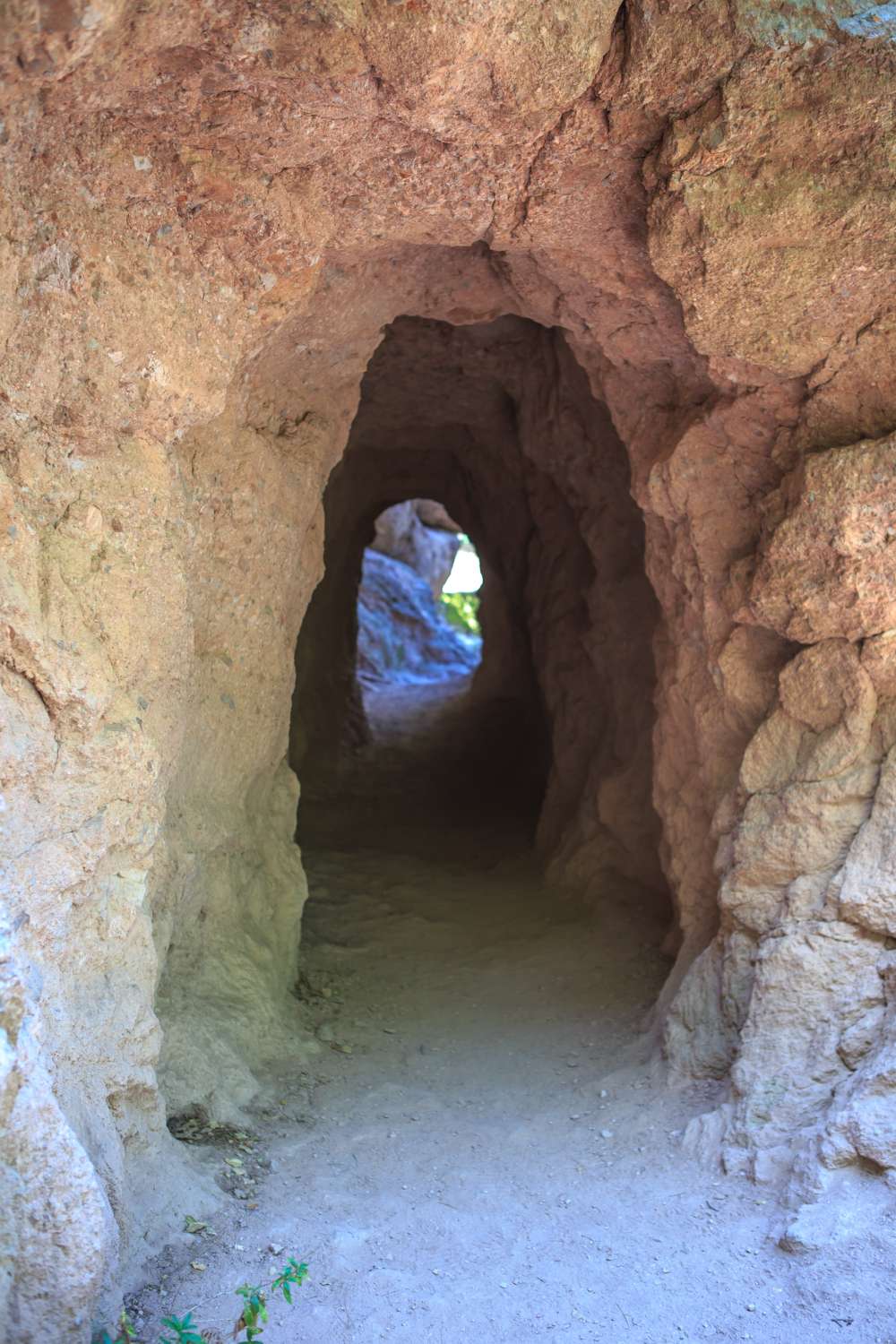
Hikes that we can recommend to you
High Peaks – This is the park’s most famous trail. Park at the Chaparral parking lot, starting at the western entrance.
Take the 1.8-mile Juniper Canyon Trail before heading onto the renowned “Steep and Narrow” High Peaks Trail (.7-miles) and returning via the Tunnel Trail (.6 miles).
That steep stretch (constructed by the Civilian Conservation Corps in the 1930s) is no joke — it was one of my favorite hikes in a National Park!
There are numerous ways to extend this trek as well. Condors may be seen in abundance here (and their slightly smaller cousins, the turkey vulture).
Balconies Caves — To complete a circle around the talus caves, start at the Chaparral parking lot and travel the other way on the Balconies Trail (.6 miles), then connect the Balconies Cliffs Trail (.8 miles).
Before you go, double-check that the caverns are open, and remember to be considerate to the sleeping bats!
Bear Gulch Reservoir — Another popular part of the park, with trails accessible from both entrances, is Bear Gulch Reservoir.
Take the Juniper Canyon Trail (1.8 miles) to the High Peaks Trail (1.8 miles) to the Rim Trail (1.8 miles) from the west (.4 miles).
Then, after rejoining the High Peaks Trail and returning to the Chaparral parking area, loop back to the Bear Gulch Cave Trail (.7 mile).
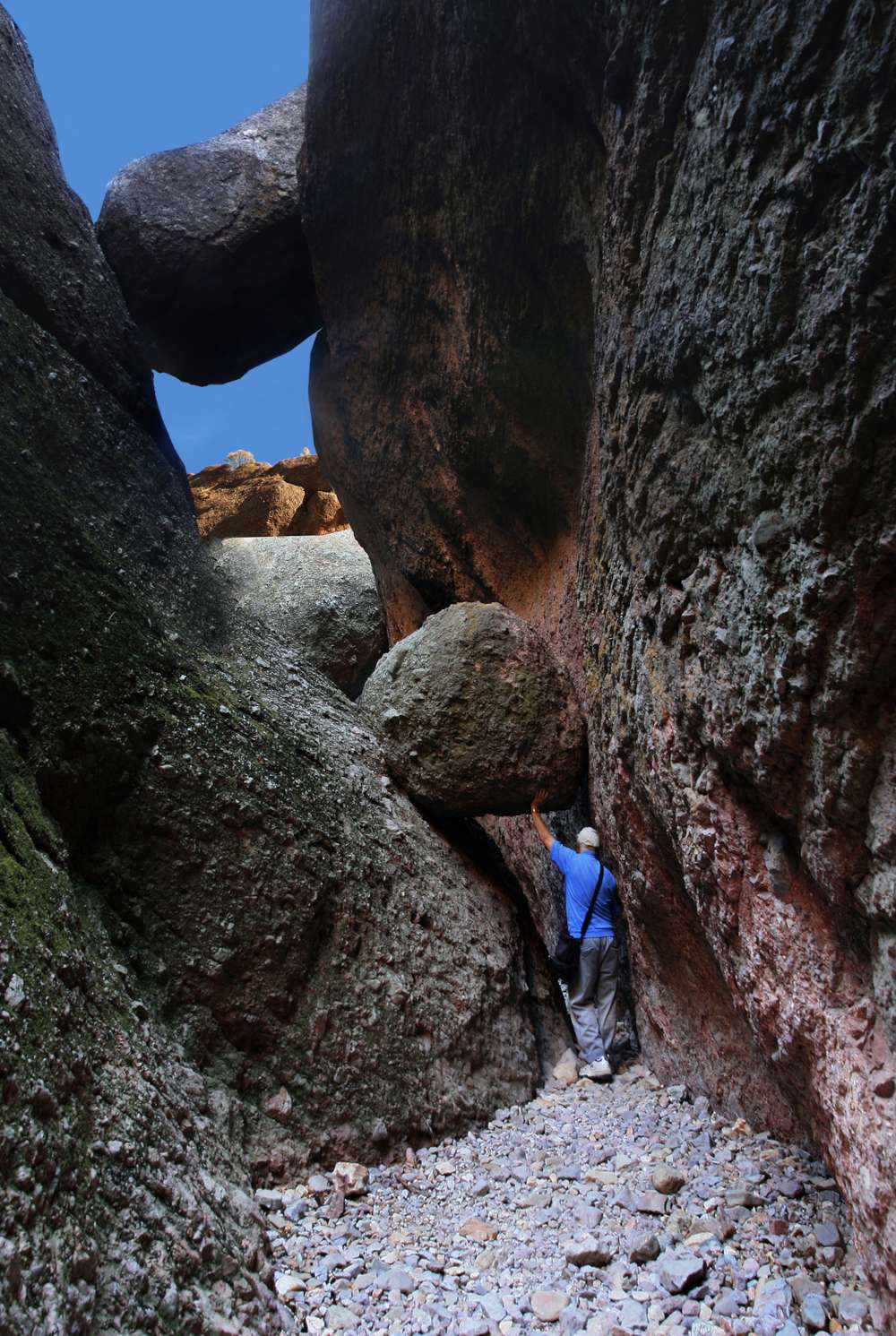
Things you need to bring when you are coming to the Pinnacles National Park
You should add a few unique items to your Pinnacles National Park packing list in addition to your essential hiking requirements (like my favorite summer hiking sandals).
Bring your binoculars, because Pinnacles is a birdwatcher’s delight. You may observe quail, falcons, eagles, and other birds in addition to the famed condors.
This inexpensive pair is quite identical to the ones we use.
If you intend on exploring the caverns, you’ll need a light like this one.
Don’t forget your sunglasses, sunscreen, and sun hat if you travel during the spring and summer (when temps can reach the 100s).
Because there is no place to buy food at the park, bring lots of snacks.
Water bottles can be filled at the parking lots and tourist centers, but it’s a good idea to bring extra, especially if you’re hiking on a hot day.
Because much of the park has no mobile coverage, make sure you download the trail map on your phone before you go.
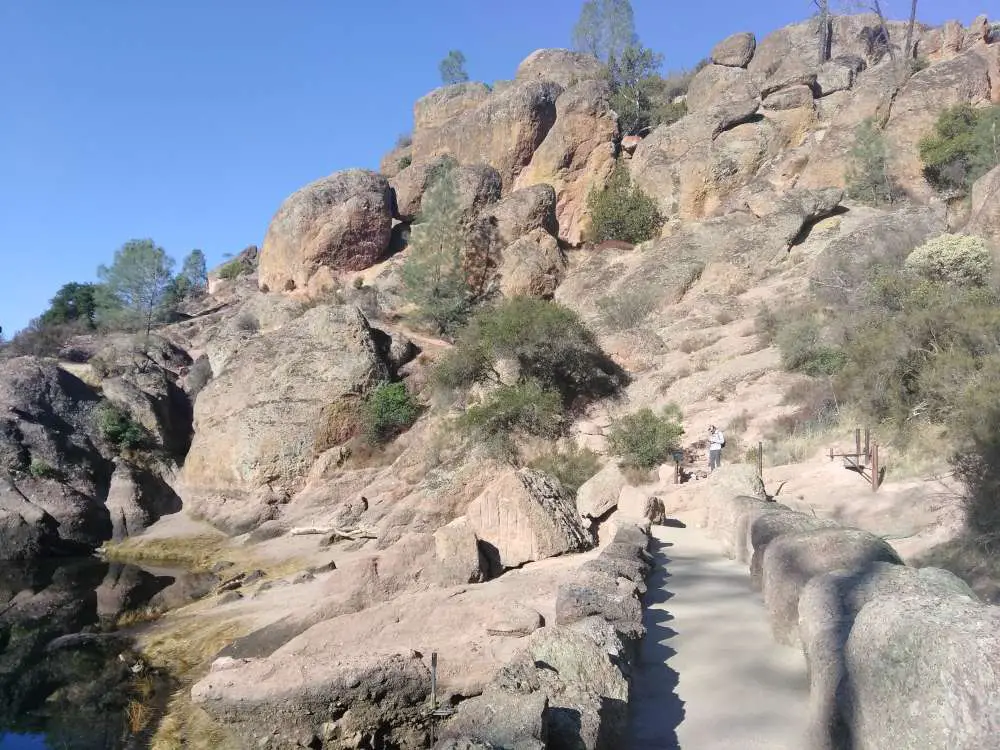
Don’t forget to ignore scenery around the park
The road from the coast to Pinnacles passes through the Salinas Valley, one of the world’s most productive (and attractive) areas.
For good cause, it’s known as the “Salad Bowl of the World.” The nearest gateway city to Pinnacles is Soledad.
It’s a small farming town with a population of around 26,000 people.
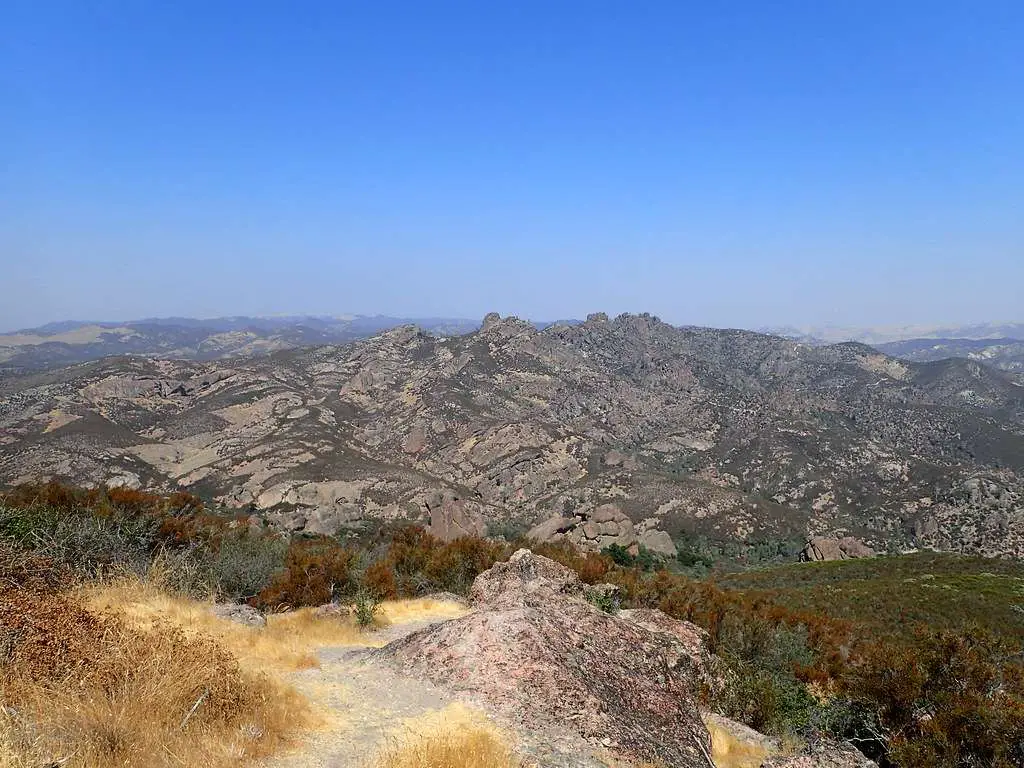
Final Words
Now you know what the Pinnacles National Park is all about, and why you need to think about coming here. The decision you take to come to the Pinnacles National Park is not something that you will worry about. That’s because it offers some unique adventures, which you will fall in love with. You need to come to this park at least for one time in your life.
Proud owner of https://travelyouman.com/

